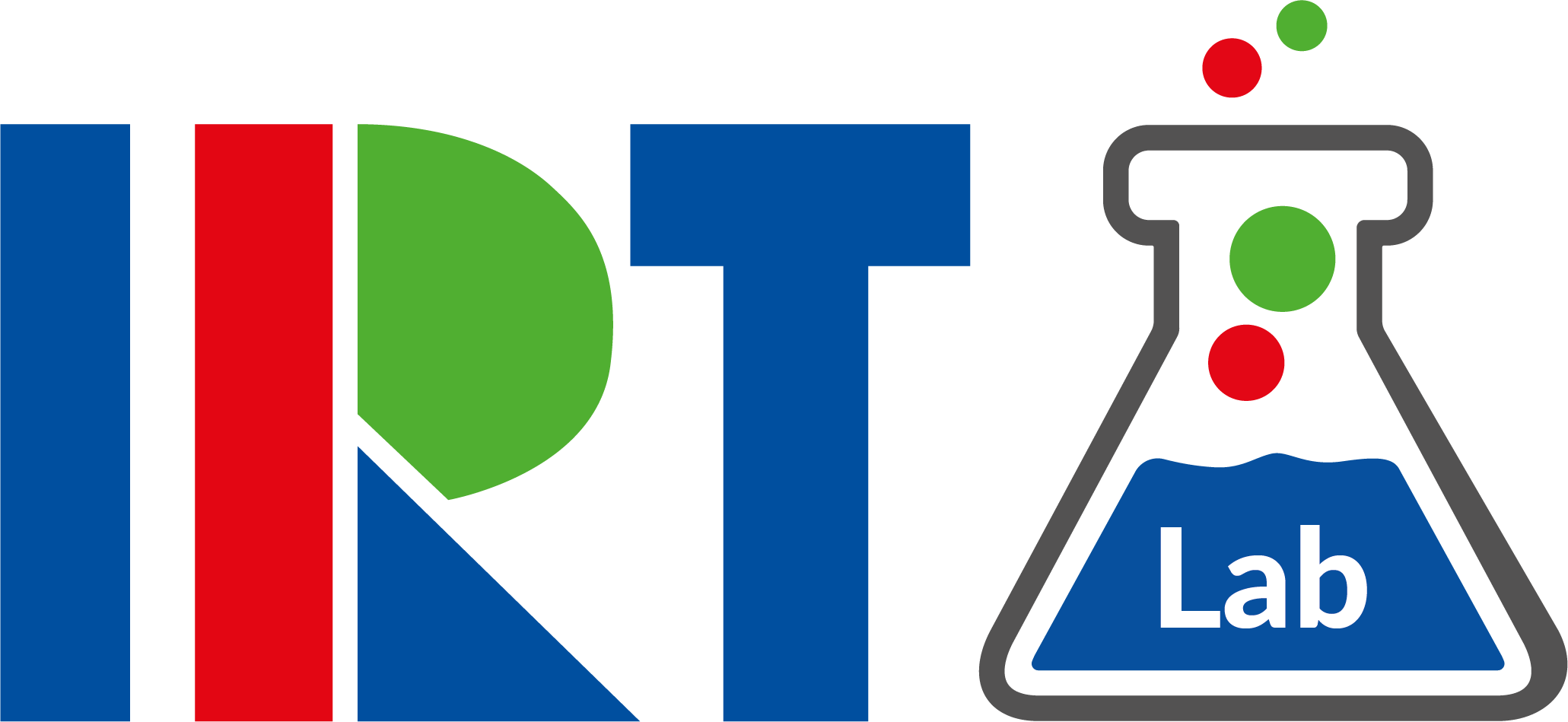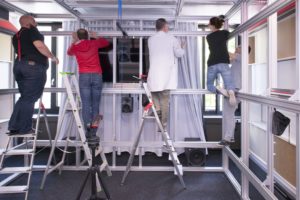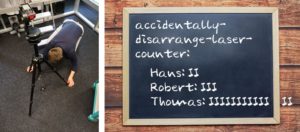3D audio or ‘immersive’ audio is a new trend since a few years in the audio R&D domain which promises to improve the listening experience for users significantly. At IRT, we have a room which we use for developing and evaluating 3D audio algorithms and tools for more than 9 loudspeaker-setups, such as the 5.1+4H (aka 4+5+0) or the famous 22.2 (aka 9+10+3) format. If these notations are unfamiliar to you, there is an ITU Recommendation for a standardized notation of loudspeaker systems in the format Upper+Middle+Lower Layer, where you can find more details. In the last months this 3D Audio Lab of the IRT was modified. The former 38 passive loudspeakers and amplifiers were replaced by 26 active ones in order to be (more) compliant with ITU-R BS.1116-3, which is an important standard for subjective listening evaluations.
With the new speakers and the new setup, IRT is ready for some Next Generation Audio (NGA) listening tests according to Recommendation ITU-R BS.1116-3 which we hope to conduct soon along with our BBC R&D colleagues. Next Generation Audio is a term for a set of new technologies, which will improve production efforts and consumer experience a lot (you may also want to check our other posts for more information on NGA). There are already codecs existing for these technologies such as MPEG-H, AC-4 and DTS:X. The result of this listening test will provide further insights and experience which will help our shareholders to make decisions related to these codecs in the future on profound knowledge.
The new Neumann KH 120 A are Full Range speakers. They cover the full range of a hearable audio spectrum, so that no bass management is needed. The two active LFE speakers weren’t replaced, as they already match our new requirements. So in total there are now 28 loudspeakers.
The new setup is now compliant to all systems listed in Recommendation ITU-R BS.2051-2, so any speaker setup from stereo to immersive (3D) with support of channel-based, scene-based and object-based input signals.
The speakers at the lower layer have an elevation of not quite -30 degree and the ones on the upper layer (except T+000) a bit more than +30 degree, so they are in range of all the speaker configurations.
Along with the new loudspeakers, the adaptable framework was changed, to match the new setup. Also the radius of the sphere was enlarged, so that the sweet spot is more tolerant. This is better for demonstrations with a larger group of listeners which we have from time to time at IRT to showcase 3D Audio.
With a laser measuring tool, exactly placed in the middle of the framework, all angles and also the distance from the sweet spot to each loudspeaker were measured. The accurate distance is used to calculate a time offset and correct this in the play out software, so that all signals from every speaker reach the center at the same time. For the leveling of the speakers, pink noise was played out and measured at the sweet spot. All speakers were set to the same sound pressure level.
We are looking forward to using our new setup for the NGA listening test beginning 2020 and we will keep you informed here about new developments.





